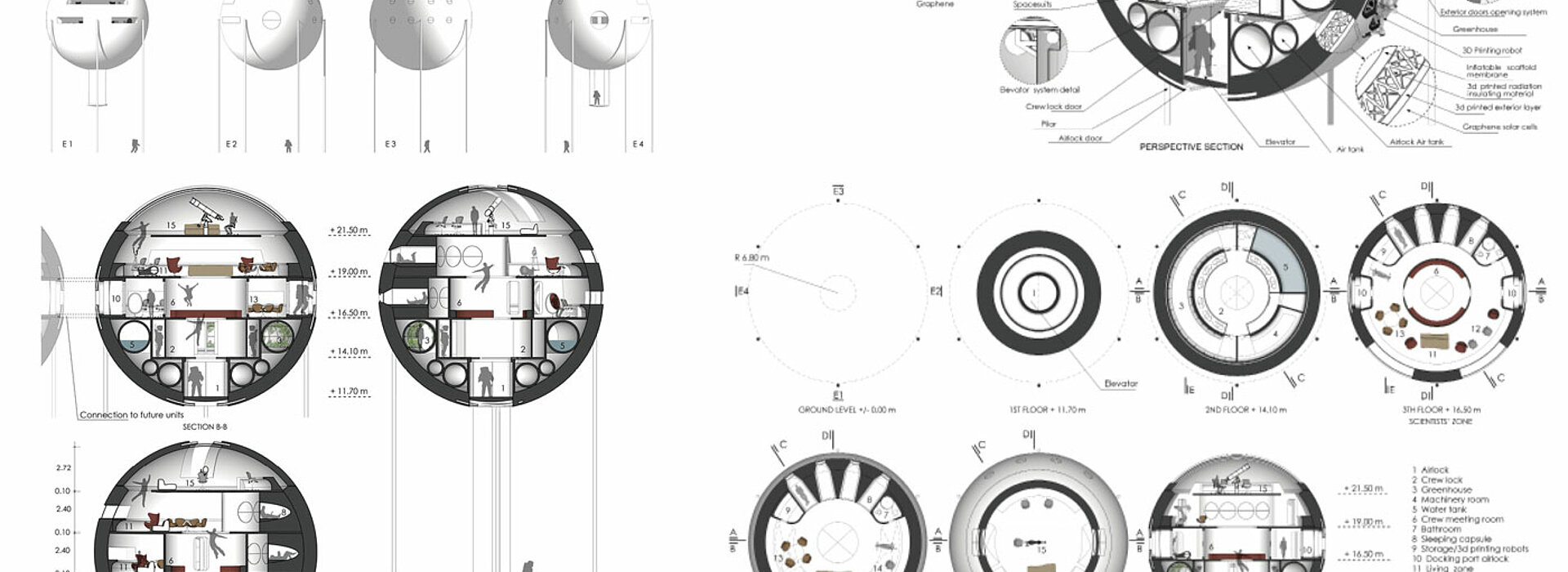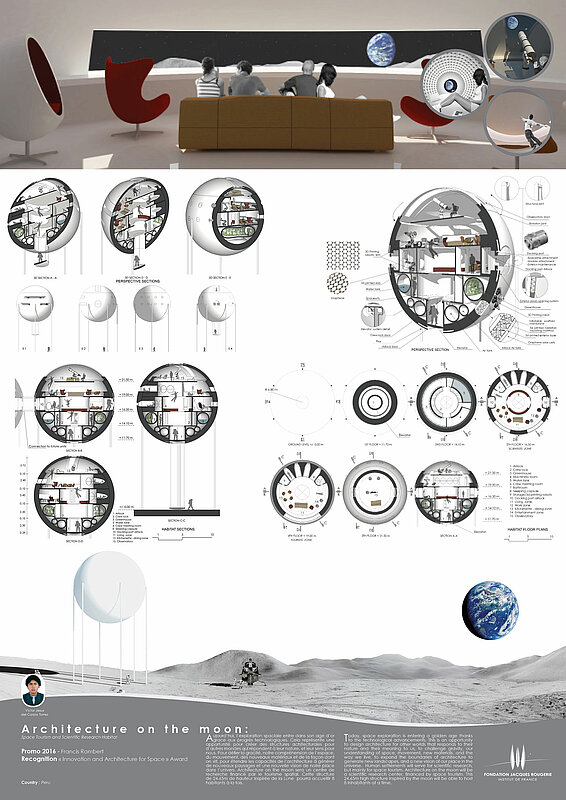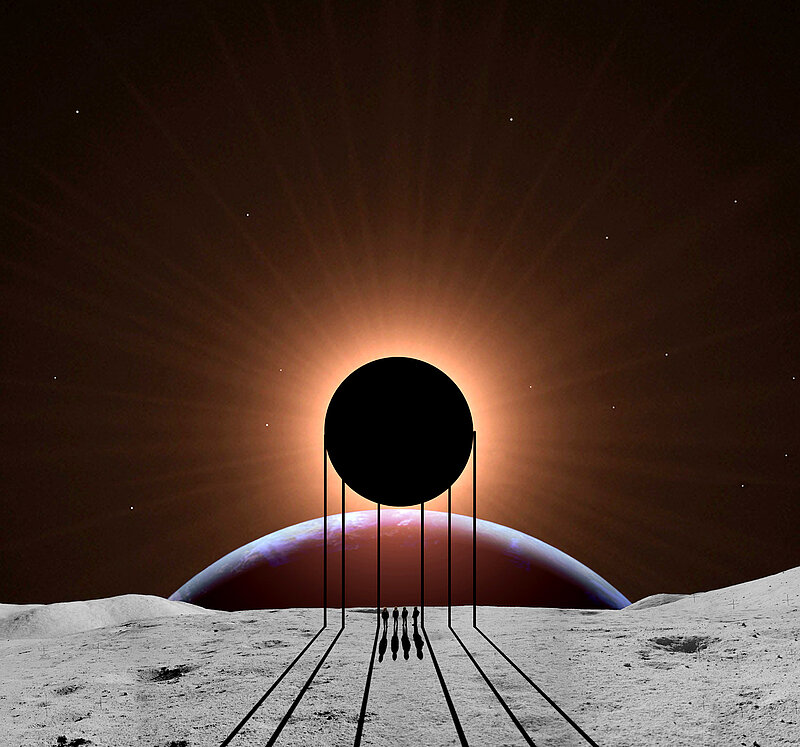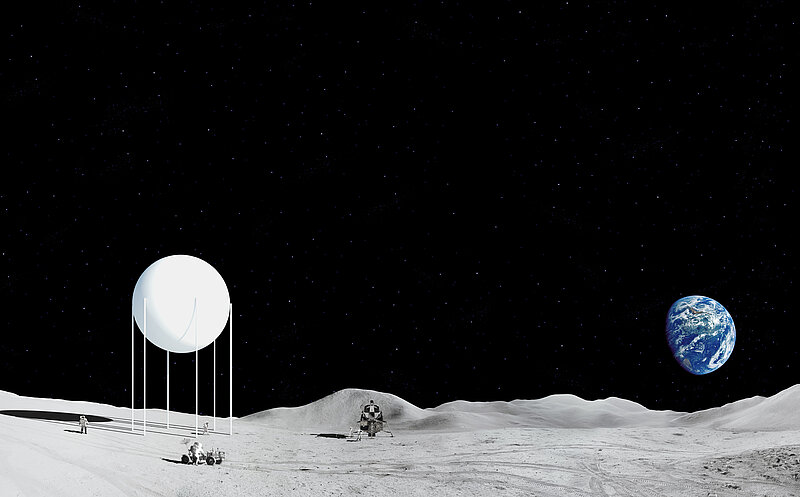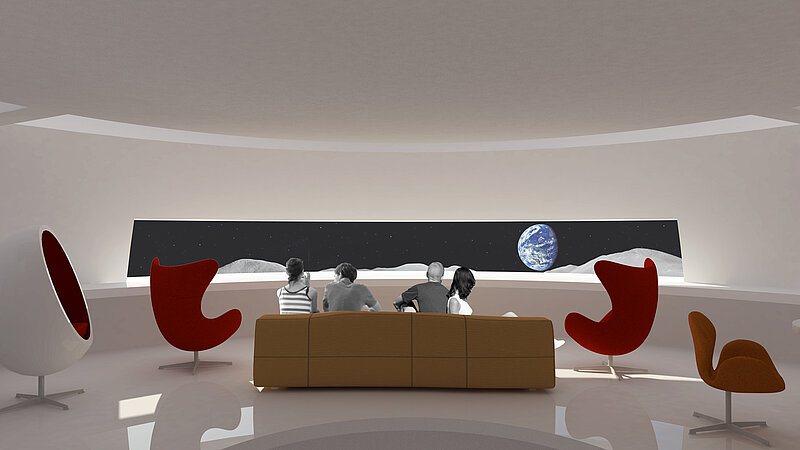Architecture on the moon Space tourism and scientific research habitat
- Year2016
- LocationThe Moon
Today, space exploration is entering its golden age. The technological advancements and the optimism for the future are opening up a wide range of possibilities for space exploration. This is an opportunity to design architecture for other worlds that responds to their nature and their meaning to us, to challenge gravity, our understanding of space, movement, new materials, and the way we live, the opportunity to expand the boundaries of architecture to generate new landscapes, and a new vision of our place in the universe. Spaceflight companies around the world have revealed their plans to get humans to the Moon and Mars and establish settlements there. Human settlements will serve for scientific research, but mainly for space tourism. Scientific researchers need a lunar habitat to study the Moon's surface and different aspects of human habitability in satellites and planets, for future settlements. For this reason a settlement for research is required, and also a place for space tourism to enable people to go to the Moon, to spend some time there, to have that unique experience, and to help in the studies of human habitability.
Scientific research would be co-financed by space tourism, the habitat would serve as a lab as well as a place for space tourists to visit and stay for a certain time. The purpose of the building is to provide shelter for humans, with architecture inspired by the moon's unique context and landscapes. The building seeks to be a frame to the earth; it seeks to connect with celestial bodies and astronomical events with a unique architecture, resulting in new landscapes that become part of the architecture of the cosmos.
